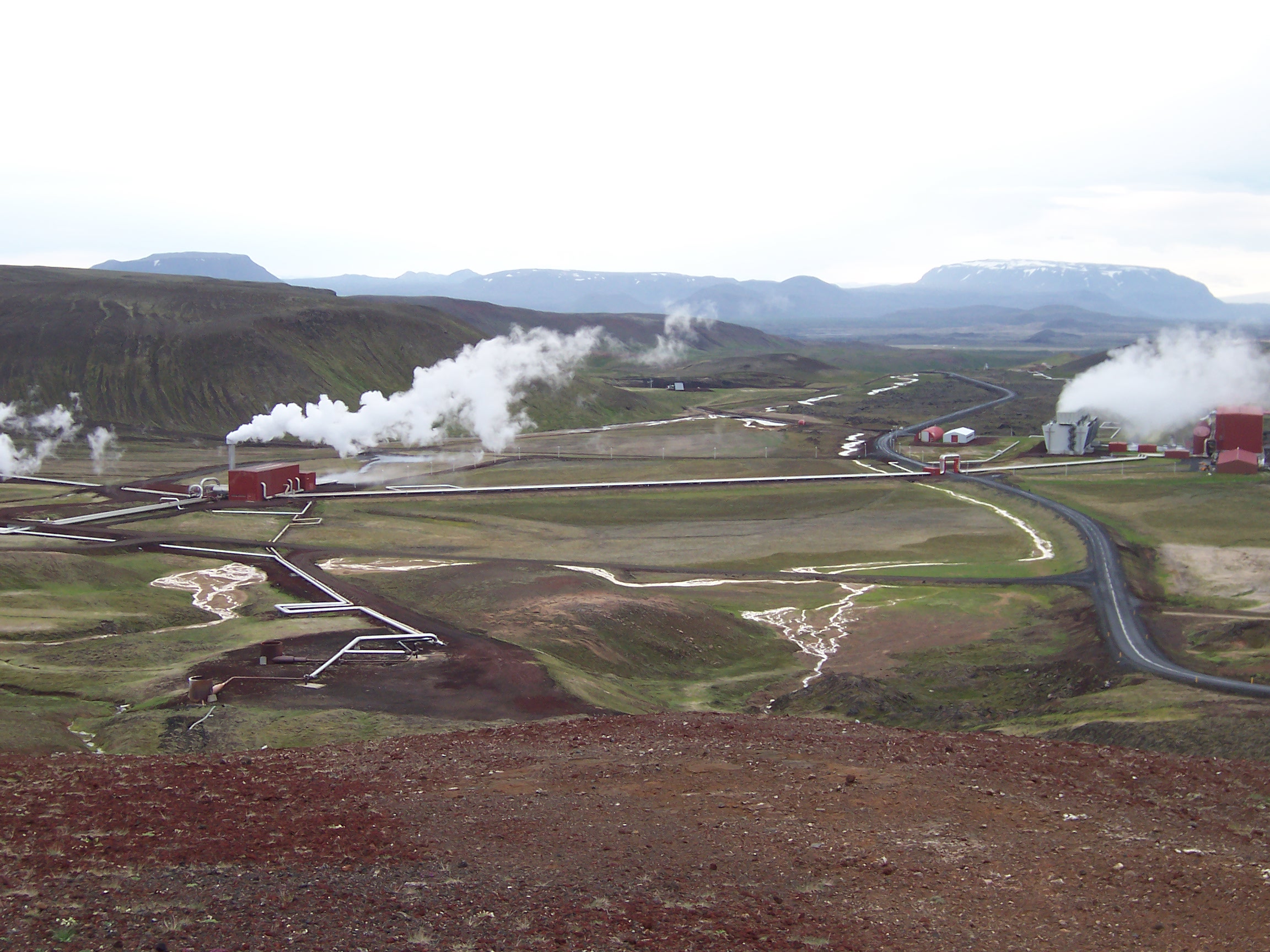|
Orkuveita Reykjavíkur
Orkuveita Reykjavíkur (English: Reykjavík Energy) is an Icelandic energy and Public utility, utility company that provides electricity, geothermal energy, geothermal hot water through district heating and cold water for consumption and fire fighting. It also operates a wholesale access fiber network and waste-treatment facilities. The company's service area extends to 20 communities in the south-west part of Iceland. Orkuveita Reykjavíkur is owned by the City of Reykjavík (93.5%) and the Municipalities of Akranes (5.5%) and Borgarbyggð (1%). History Orkuveita Reykjavíkur was established 1 January 1999, by uniting Rafmagnsveita Reykjavíkur and Hitaveita Reykjavíkur. Rafmagnsveita Reykjavíkur was established in the year 1921. Hitaveita Reykjavíkur became an independent company in 1946, having been in operation as a City entity since 1930. In the year 2000 Vatnsveita Reykjavíkur was united with Orkuveita Reykjavíkur, but the former started operation 16 June 1909. Orkuveit ... [...More Info...] [...Related Items...] OR: [Wikipedia] [Google] [Baidu] |
Reykjavík
Reykjavík ( ; ) is the capital and largest city of Iceland. It is located in southwestern Iceland, on the southern shore of Faxaflói bay. Its latitude is 64°08' N, making it the world's northernmost capital of a sovereign state. With a population of around 131,136 (and 233,034 in the Capital Region), it is the centre of Iceland's cultural, economic, and governmental activity, and is a popular tourist destination. Reykjavík is believed to be the location of the first permanent settlement in Iceland, which, according to Landnámabók, was established by Ingólfr Arnarson in 874 CE. Until the 18th century, there was no urban development in the city location. The city was officially founded in 1786 as a trading town and grew steadily over the following decades, as it transformed into a regional and later national centre of commerce, population, and governmental activities. It is among the cleanest, greenest, and safest cities in the world. History According to lege ... [...More Info...] [...Related Items...] OR: [Wikipedia] [Google] [Baidu] |
Nesjavellir Geothermal Power Station
The Nesjavellir Geothermal Power Station ( is, Nesjavallavirkjun, ) is the second-largest geothermal power station in Iceland. The facility is located above sea level in the southwestern part of the country, near Þingvellir National Park and the Hengill mountain range, about 30 km east of central Reykjavík. The power station is owned and operated by ON Power. Plans for utilizing the Nesjavellir area for geothermal power and water heating began in 1947, when boreholes were drilled to evaluate the area's potential for power generation. Research continued from 1965 to 1986. In 1987, construction of the plant began, and the cornerstone was laid in May 1990. The station produces approximately 120 MW of electrical power; it also delivers around of hot water per second - with a heating capacity of 150 MWt, serving the space heating and hot water needs of the Capital Region. See also {{Commons category, Nesjavellir Geothermal Power Station * Geothermal electricity * G ... [...More Info...] [...Related Items...] OR: [Wikipedia] [Google] [Baidu] |
Landsvirkjun
Landsvirkjun, () the National Power Company of Iceland, is Iceland's largest electricity generator. Landsvirkjun operates 18 power plants in Iceland concentrated on five main areas of operation. History Landsvirkjun was founded on 1 July 1965 by the state of Iceland and the city of Reykjavík. The city of Reykjavík contributed to the company three power stations on the Sog River. Shortly after its founding construction on the Búrfell hydropower station began. From 1965 until 2005 the purpose of Landsvirkjun was to produce and distribute high voltage electricity. The municipality of Akureyri acquired a 5% share in Landsvirkjun in 1983 and became the third owner. Three hydropower stations on the Laxá River previously owned by the municipality of Akureyri were merged into Landsvirkjun. The hydropower stations Búrfell, Sigalda, Hrauneyjafoss, Blanda, Sultartangi, Vatnsfell, and Fljótsdalsstöð were all built by Landsvirkjun. The geothermal power station Krafla came under Lan ... [...More Info...] [...Related Items...] OR: [Wikipedia] [Google] [Baidu] |
Electricity Sector In Iceland
The electricity sector in Iceland is 99.98% reliant on renewable energy: hydro power, geothermal energy and wind energy. Iceland's consumption of electricity per capita was seven times higher than EU 15 average in 2008. The majority of the electricity is sold to industrial users, mainly aluminium smelters and producers of ferroalloy. The aluminum industry in Iceland used 71% of produced electricity in 2011. Landsvirkjun is the country's largest electricity producer. The largest companies in the retail market are RARIK, Orkuveita Reykjavíkur and Hitaveita Suðurnesja. Electricity production increased significantly between 2005 and 2008 with the completion of Iceland's largest hydroelectric dam, Kárahnjúkar Hydropower Plant (690MW).Energy in Sweden, Facts and figures Energiläget i siffror ,The Swedish Energy Agency, Specific electricity production per inhabitant with breakdown by power source, (kWh/person) Source: IEA/OEC2006 T23 2007 T25 2008 T262009 T25 an2010 T49 Iceland's ... [...More Info...] [...Related Items...] OR: [Wikipedia] [Google] [Baidu] |




.jpg)